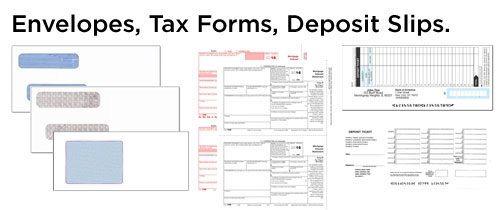Advantage Laser Installs 21.8KW Solyndra Solar Array

Next week we begin installation of rooftop solar array on our MICR
toner cartridge manufacturing facility in Atlanta, Georgia. The
solar project has been broken into three arrays. We will start by
installing Array #1 - a 21.8KW array that will produce 29,654 KW
hours per year. This will only provide about 23% of the power we
currently use. Once Arrays #2 and #3 are built the complete system
will provide 70% of our power usage. Our goal will be to become
power neutral meaning we produce 100% of the power we need. So after
all 3 arrays are installed, we will have to decrease our power usage
by 30% via increased efficiency e.g. LED lighting project (more on
that later).
It
Makes Environmental and Business Sense
The environmental benefits of solar power are obvious, the challenge
is to operate as green as possible and still remain a viable
business. I looked at solar a couple of years ago, but it was
difficult to make the numbers work. The federal government was
giving a 30% tax credit and the state (Georgia) had no incentive
whatsoever. Several months ago Mark Bell with
Empower contacted us about
solar. He got us up to date on solar power legislation and
incentives. Solar (green) power was included in the economic
stimulus and recovery act of 2009. Now the federal government will
pay the 30% as a grant up front and the state of Georgia will give
an additional 35% tax credit towards a commercial solar
installation. This made all the difference. The federal grant, means
we don't have to borrow as much money. The state also has a grant,
but it is limited to $2.5 million and applications flooded the GEFA
office. The rebate program was closed after just one day. So we're
going the tax credit route, which creates a challenge in itself.
Sometimes I think the tax aspects of a solar array are much more
complex than the technical ones. After calls to two accountants, the
state and Empower, we determined the array would pay for itself in
about five and a half years. Not bad, after that we'll have an array
with a 25 year life expectancy with free green power.
Solar
Panels Made in the USA

Much of the solar PV (PhotoVoltaic) is dominated by China these
days. We prefer to buy products made here in the USA when we can.
Lucky for us, we have a white roof. Why should this matter? This
allowed us to install a new innovative solar panel from Solyndra
(made in Silicon Valley CA). Traditional PV uses a solid panel that
is angled to the sun to maximize efficiency. But angled panel makes
a great sail and therefore it requires a physical attachment and
penetration through the roofing system or a heavy ballasting system.

Solyndra has a revolutionary solar panel that uses a series of tubes
with space between them so that the wind passes right through them.
The tubes on the Solyndra panel absorb the sunlight that is
reflected off the white roof as well. The result is an array that
can be installed in a fraction of the time and maximizes efficiency
per square foot. The Solyndra panel costs about twice as much as a
traditional panel, but the savings in installation time and mounting
brackets make them come out about even. We are one of the first
Solyndra customers in the Southeast for a technology that may
revolutionize solar installations on many flat-roofed buildings.
Below is our rooftop layout of all 3 arrays. Array #1, on the far
right, will be the first. Installation of all three was too much of
a financial burden. Our goal is to install an array each year for
the next 3 years.

Once Arrays 2 & 3 are complete, our system power will be a total
of 65.9 KW producing 85,865 KW hours a year.
Another option we have is to sell our "green" power to GA power through their Green energy buyback program. In this program, we take 100% of our green power and sell it to GA Power for $0.18 per KWH (about 4-5 cents per KWH than we pay for solar power). Right now GA Power's green energy buyback is closed to new energy providers. The program is capped 1.5 Megawatts per year, which isn't that much.
Increasing Efficiency
We are also replacing the largest two of our four HVAC units with new Trane High Efficiency units. We've also added rooftop motion detection and surveillance cameras. This will double to protect our solar array as well as our HVAC units from copper theft.
Installing a solar array has some exciting possibilities, but before you take the plunge, do the research. There is a lot to learn, especially about the tax code and what you can deduct and what you can't. But in the end, if you have a long term perspective, investing in a solar array makes sense. Imagine the energy savings and decrease in air pollution that would be possible if every business with a roof filled them with solar panels.
 Day
1 of the solar panel project got off to a bad start. The crane started
setting up at 9:00 and was ready to go, but we had no panels. The truck
was already a day late and communication with the trucking company was
terrible. First the panels were supposed to be there Monday morning,
then Monday evening, then Tuesday morning at 7:00 sharp, then at 9:00
they were an hour out, finally the panels arrived at 2:00pm Tuesday.
Meanwhile we had 10 people standing around with little to do.
Day
1 of the solar panel project got off to a bad start. The crane started
setting up at 9:00 and was ready to go, but we had no panels. The truck
was already a day late and communication with the trucking company was
terrible. First the panels were supposed to be there Monday morning,
then Monday evening, then Tuesday morning at 7:00 sharp, then at 9:00
they were an hour out, finally the panels arrived at 2:00pm Tuesday.
Meanwhile we had 10 people standing around with little to do.

 Once
the panels arrived, we got to work with the crane. We had 8 pallets of
panels and two more pallets of support legs and other misc hardware. The
nice thing about the Solyndra panels is they are so fast to install.
Once we got trained on the assembly, we were able to have all 125 panels
installed by 6:30 that evening. Yes, we did finish in the dark, but it
felt good to get the panels installed.
Once
the panels arrived, we got to work with the crane. We had 8 pallets of
panels and two more pallets of support legs and other misc hardware. The
nice thing about the Solyndra panels is they are so fast to install.
Once we got trained on the assembly, we were able to have all 125 panels
installed by 6:30 that evening. Yes, we did finish in the dark, but it
felt good to get the panels installed.
Check out more photo's of the solar array.
Thursday, January 21, 2010
Selling Green Power vs. Decreasing Peak Load
As we harvest energy from the sun there are several ways to
take advantage of it. One is to use the power ourselves with
net metering. With net metering our meter "run backwards"
when we're producing more energy than we're using. Otherwise
it just slows down our meter. An advantage of net metering
is we can use the solar array to decrease our peak load.
Commercial customers are charged per KWH, but GA Power has
incentives to business to smooth out their power usages by
charging more, the higher your peak load. Each month a
commercial business peak load rate is determined by the
highest half hour power usage in the previous 11 months. The
business about calculating peak load appears to be
intentionally designed to be confusing. Empower has been
working with us to see if they can decrease our peak load,
and thus lower our overall price we pay per KWH.
Another option we have is to sell our "green" power to GA power through their Green energy buyback program. In this program, we take 100% of our green power and sell it to GA Power for $0.18 per KWH (about 4-5 cents per KWH than we pay for solar power). Right now GA Power's green energy buyback is closed to new energy providers. The program is capped 1.5 Megawatts per year, which isn't that much.
Increasing Efficiency
We are investigating a LED lighting project that would
replace all of our existing florescent lights with new LED
fixtures. Initial estimates indicate we would save about
15KW with the LED project. Empower is also consulting with
us on the LED lighting project as well.
We are also replacing the largest two of our four HVAC units with new Trane High Efficiency units. We've also added rooftop motion detection and surveillance cameras. This will double to protect our solar array as well as our HVAC units from copper theft.
Installing a solar array has some exciting possibilities, but before you take the plunge, do the research. There is a lot to learn, especially about the tax code and what you can deduct and what you can't. But in the end, if you have a long term perspective, investing in a solar array makes sense. Imagine the energy savings and decrease in air pollution that would be possible if every business with a roof filled them with solar panels.
Wednesday, January 20, 2010
Advantage Laser Solar Panel Project - Day 1
Check out more photo's of the solar array.
Solar Panel Project - Day 2
While
we were on the roof, the electrician ran conduit from the roof
penetration to the inverters (indoors). 3 SMA SunnyBoy inverters will do
the job, but they take up way more wall space than I'd hoped. I have no
idea where we will mount the inverters for future arrays. We went with
three inverters to save money over buying one large inverter, but there
is a space penalty.
Day 3 is a bit of a wash, as it's raining, so nothing will happen on the
roof. The electricians will be able connect the inverters to our panel.
This is how the power gets into our system. We also wired the sunny boy
webbox to the inverters which will enable us to monitor real time power
production and see exactly how much power is generated by the system via
a web browser.
Day 4 - assuming it's sunny, we should be able to run the power from the
splicer box to the inverters and crank it up. That's the plan.
Tuesday, January 26, 2010
Solar Project
- Day 7
It's been a week and we are now producing solar power, real
green power delivered free from the sun! The array was installed
in one day. It took another 2-3 days for the electricians to
mount the inverters and run the conduit from the array to the
inverters to our panel. Yesterday was sunny, so it was a good
day to crank up the inverters and see what we were producing. We
could have started it sooner, but it was rainy on Friday and the
engineers from Empower didn't want to launch on a cloudy day
because there was still more testing to go and they wanted to
see the array perform at full power. We're producing 11KW of
power right now at 11:20. That's actual power delivered into
our electrical system after any loses from the inverter.We
actually have three 6KW inverters. Here's some actual data from
each inverter...
 The SMA WebBox collects data from the inverters on power
generated and CO2 emissions avoided. You can checkout our power
production at anytime from our
SunnyPortal.
Right now it doesn't show much power generated, but it will.
The system isn't real time and only gets updated every so often.
Still it's nice to be able to monitor the power generated by the
system.
The SMA WebBox collects data from the inverters on power
generated and CO2 emissions avoided. You can checkout our power
production at anytime from our
SunnyPortal.
Right now it doesn't show much power generated, but it will.
The system isn't real time and only gets updated every so often.
Still it's nice to be able to monitor the power generated by the
system.
At this point there really isn't much to do with the system. PV
systems such as this are relatively maintenance free. Annual
maintenance includes pressure washing the panels and the roof
underneath the panels, as the Solyndra modules rely on the
reflective surface of the white roof for 20% of their power
generation. I'll update in the future on the system performance
promised vs. delivered. -Marvin














